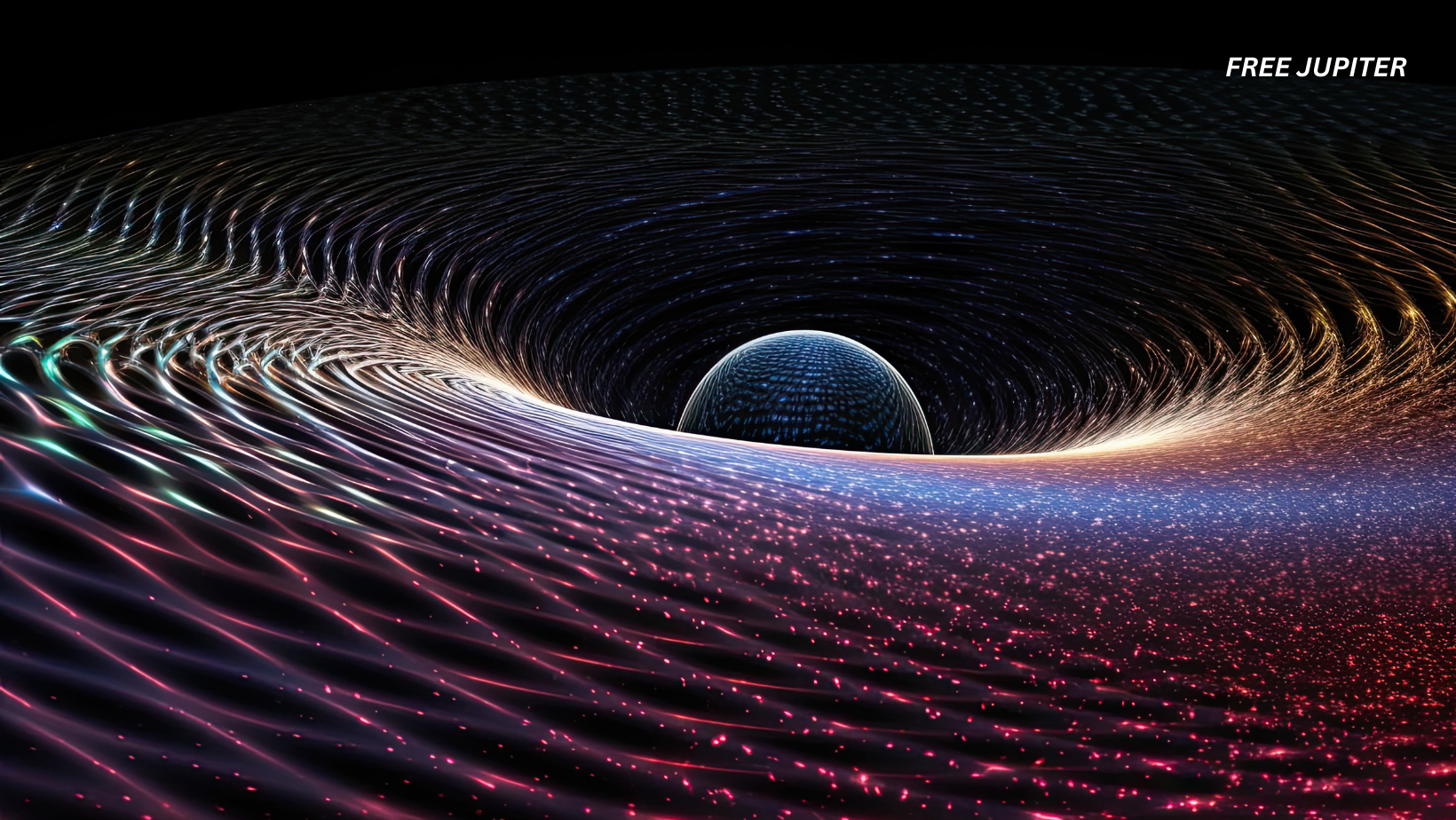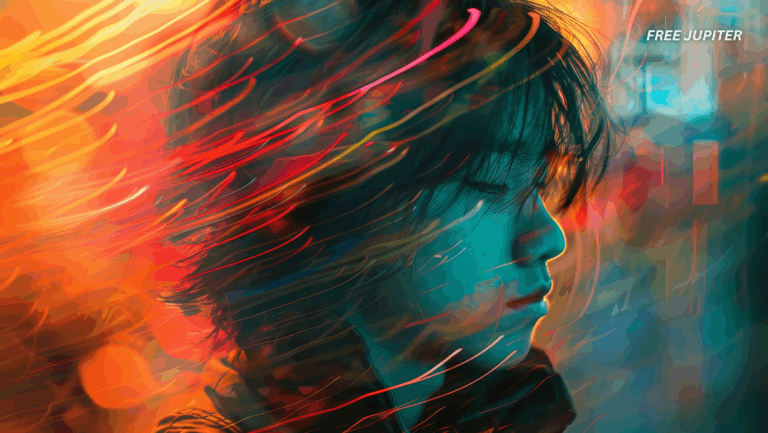Imagine a cosmic cemetery where the tombstones are not marble, but collapsed stars—black holes and neutron stars—forever locked in a slow, spiraling dance until they collide. Thanks to gravitational waves, faint ripples in the very fabric of space-time, scientists have now uncovered that this “stellar graveyard” is busier and more dramatic than anyone imagined.
These discoveries not only tell us about the life and death of the universe’s most massive stars but also help refine our understanding of how fast the universe itself is expanding.
What Exactly Are Gravitational Waves?
First things first: gravitational waves are ripples in space-time. Picture tossing a pebble into a pond—the ripples spread outward. Except in this case, the “pond” is space-time itself, and the “pebble” is something unimaginably powerful, like two black holes smashing together.
Albert Einstein predicted these ripples back in 1915 as part of his theory of general relativity. But it wasn’t until 2015 that scientists finally detected them using the LIGO (Laser Interferometer Gravitational-Wave Observatory) detectors in the U.S. Since then, an international network—including Virgo in Italy and KAGRA in Japan—has been tuned to listen for these faint cosmic murmurs.
Read more: Massive Cosmic Jets Bigger Than Our Galaxy Just Shot Out of a Black Hole
A Stellar Graveyard Comes Alive
During the latest observing run between May 2023 and January 2024, scientists detected 128 new “events”—moments when black holes or neutron stars merged. That’s more than just a number; it’s like stumbling onto a treasure chest of cosmic fossils.
Among these events were two especially rare finds: mergers between black holes and neutron stars. Only one such “mixed” merger had ever been heard before. Now, with two more added, astronomers are starting to piece together how often these unusual pairings happen.
Daniel Williams, a researcher at the University of Glasgow, likened the effort to paleontology: just as fossils tell us about dinosaurs long gone, these mergers reveal secrets about stars that died millions or billions of years ago.
Black Holes, Neutron Stars, and Their Cosmic Drama
When very massive stars—those at least eight times heavier than our Sun—burn through their fuel, they explode in a supernova. The remains collapse into either a neutron star (an ultra-dense ball about the size of a city but with more mass than the Sun) or a black hole (a region of space where gravity is so strong not even light escapes).
Now, picture these remnants finding partners. Two black holes can orbit each other for millions of years, gradually spiraling inward until—bam—they merge, sending out a massive gravitational wave. The same can happen with neutron stars, or with one of each.
Interestingly, some black holes born from mergers don’t stop there. In crowded regions of space like star clusters, they might find another partner and merge again, creating an even bigger black hole. It’s a kind of cosmic dating game, except every match ends in violent union.
The Heaviest Black Holes Yet
The newly analyzed data revealed the heaviest black holes ever detected through gravitational waves. This suggests that some of the objects scientists are “hearing” might not just be collapsed stars but black holes created by earlier collisions. In other words, we may be catching echoes of black holes that are the result of multiple generations of mergers.
This raises a fascinating question: how many times can black holes keep merging before they reach sizes we can hardly imagine?
A Tool for Measuring the Universe
Beyond star gossip, these mergers also provide a cosmic measuring stick. Normally, astronomers measure the expansion of the universe using galaxies and light. But gravitational waves offer something different: they can directly tell us how far away an event occurred.
Each merger adds a data point to refine the Hubble Constant—the rate at which the universe is expanding. But here’s the twist: scientists don’t all agree on what that number is. Different methods give slightly different answers. By adding gravitational waves into the mix, researchers hope to settle one of astronomy’s longest-running debates: how fast is the universe really growing?
Read more: Astronomers Suggest That Earth Is Sitting in the Middle of a Massive ‘Cosmic Void’
Einstein Still Holds Strong
One of the most powerful signals in this new batch, labeled GW230814, was the loudest gravitational wave yet detected. Stronger signals mean better tests of Einstein’s theory of general relativity, which has held up flawlessly for over a century.
So far, Einstein’s predictions are still rock solid. But scientists are keeping their eyes open, searching for the tiniest deviations that might hint at new physics.
How Do We “Hear” the Universe?
Gravitational wave detectors like LIGO, Virgo, and KAGRA don’t use ears—they use lasers. Each detector shoots beams of light down long tunnels, measuring tiny changes as passing gravitational waves stretch and squeeze space itself. The shifts are so small they’re measured in fractions of a proton’s width, which is why building and upgrading these detectors is such a feat of engineering.
Recent upgrades have made the instruments about 25% more sensitive, letting them capture events billions of light-years away. Think of it as giving the universe’s faintest whispers a megaphone.
Where’s the Light?
Interestingly, none of the two recent black hole–neutron star mergers produced visible flashes of light, at least not ones we could see from Earth. In theory, smashing a neutron star into a black hole should release a bright burst of energy. But in these cases, only gravitational waves were spotted.
Future telescopes, like the Vera Rubin Observatory, may help astronomers catch both the light and the waves from such events. When both signals are detected together, scientists call it “multi-messenger astronomy”—a way of experiencing the universe not just through sound (gravitational waves) but also through sight (light, X-rays, gamma rays, and so on).
Related Cosmic Mysteries
The discovery of this stellar graveyard connects to several other big questions in astronomy:
- Where do heavy elements come from? Mergers of neutron stars are thought to create precious metals like gold and platinum. Every ring on your finger may once have been forged in a stellar collision.
- Can black holes solve dark matter puzzles? Some theories suggest that certain black holes might make up part of the mysterious dark matter that dominates the universe.
- What’s next for gravitational wave astronomy? Future detectors, like the planned space-based LISA (Laser Interferometer Space Antenna), will be able to listen to lower-frequency waves from even larger mergers, offering a whole new window into the universe.
Read more: Quadruple Star System Found Surprisingly Close to Earth
A Universe Full of Echoes
If anything, these new findings remind us that the universe is far from silent. Every ripple detected is a story of stars that lived, died, and left behind cosmic remnants that keep colliding long after their deaths.
As Christopher Berry, one of the researchers, put it: the biggest stars live the shortest lives, leaving behind clues we can only piece together through their black hole and neutron star remains.
So while Earthly cemeteries grow quiet over time, the cosmic graveyard is endlessly noisy—filled with the faint but profound echoes of the universe’s most extreme events.
Image: Freepik.
Friendly Note: FreeJupiter.com shares general information for curious minds. Please fact-check all claims and double-check health info with a qualified professional. 🌱










